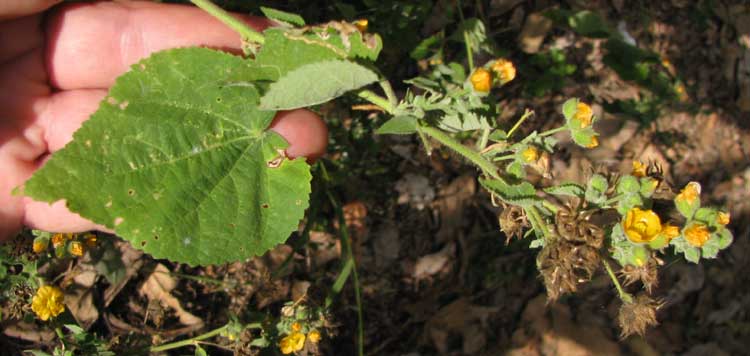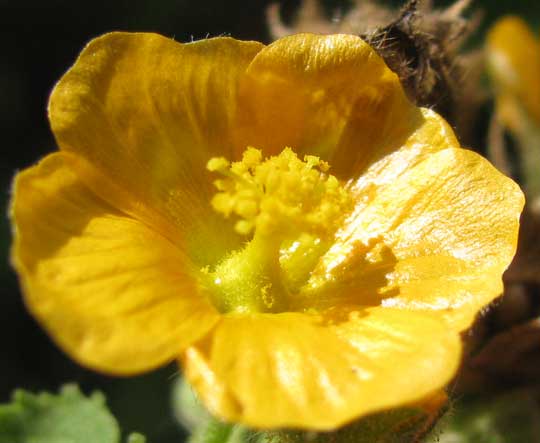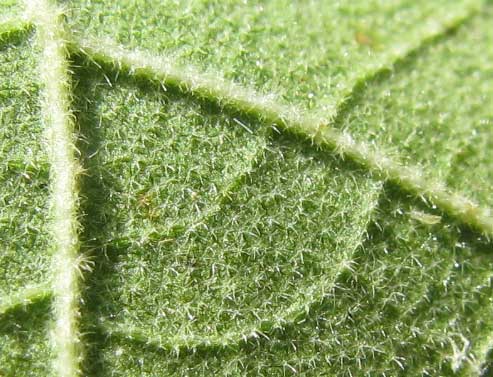Excerpts from Jim Conrad's
Naturalist Newsletter

from the December 19, 2010 Newsletter issued from Hacienda Chichen Resort beside Chichén Itzá Ruins, central Yucatán, MÉXICO; limestone bedrock, elevation ~39m (~128ft), ~N20.676°, ~W88.569°
UMBRELLA INDIAN MALLOW
What a large number of weedy, herbaceous or semi-herbaceous, small flowered, yellow-orange-petaled members of the Hibiscus Family, the Malvaceae, there are. A sprig of a shoulder-high one next to the hut is shown above.
This species is similar to North America's Velvetleaf, but different in subtle ways. Its leaves are a little velvety, but not as much so as Velvetleaf's. A flower close-up showing the stamens' filaments fused together at their bases above a fuzzy ovary is shown below:

A fruiting head showing six or seven very hairy, split-open capsules called schizocarps is shown below:

I couldn't identify this plant until it fruited, so I could see the details very nicely apparent in that last picture. Mainly, notice that within each of the six or seven split-open schizocarps there's just one hairy seed. Closely related Velvetleaf, genus Abutilon, produces two or more seeds in each capsule.

UPDATE: In 2010, with sources I had available then, I guessed that our plant was the unfortunately named Bastardia viscosa. Later that name was changed to Abutilon viscosum. Still later certain Abutilon species were shifted to the genus Pseudabutilon. When I uploaded the pictures to the iNaturalist website, user "danielmcnair," with a special interest in Hibiscus Family members, recognized our plant as a Pseudabutilon. The only modern record of plants being found in the northern Yucatan now considered to belong to Pseudabutilon is ABUTILON UMBELLATUM, whose identified pictures on the Internet appear to be similar to our plant. As of 2024 I'm guessing that that's right.